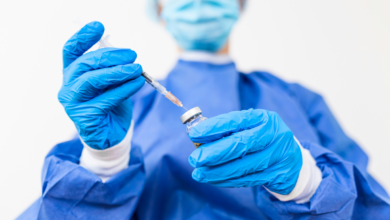
Podcast: Play in new window | Download
In today’s world organ transplants are surprisingly commonplace. While still a risky procedure whenever they are undertaken, advances in medical science have allowed surgeons to provide the best possible chance for survival to patients suffering from an array of organ defects.
Perhaps with no organ is this more important than with the heart. For many years researchers examined ways in which they could make transplants a viable option until, in 1967, a surgeon named Dr Christian Barnard performed the very first successful human heart transplant.
Many years of research preceded Dr Barnard’s successful transplant, with the roots of his eventual success traceable back into the 1700s. Specifically, before the first transplant could be made possible advances were needed in the field of immunology.
This field of medicine specifically examines the biomedical science that relates to all aspects of the human immune system and had slowly been evolving over the centuries, providing medical practitioners with ever-improving information and tools.
Important milestones in the field include the discovery of antibodies and antigens, the discovery of blood types and the theory of host resistance, all of which brought surgeons a few steps closer to completing the first transplants. Knowledge of host resistance and blood types especially was important, as early research demonstrated that a host’s body was susceptible to rejecting the organ transplanted into it if it came from a donor who did not adequately match their particular biological makeup.
Furthermore, advances in surgical techniques complemented this increased understanding of immunology. Improvements in suturing techniques allowed late 19th century surgeons to begin lab experimentation in relation to transplants. These early experiments allowed researchers to see that cross-transplantation between different species was impossible and transplantation between members of the same species also generally failed. However skin grafts, assuming that the skin was taken from elsewhere on the host’s body, could be successful. Combined with an increasing understanding of immunology doctors began to realise that same-species transplants were possible, assuming the correct conditions were met.
Finally, improvement in knowledge relating to the general operation of the heart allowed surgeons to further understand the potential of the procedure and the pitfalls that related to it. By the 1950s numerous experiments involving animals had helped expand upon and prove many of the aspects of the theory relating to heart transplants, interweaving all of these improvements into a near-cohesive whole.
Eventually, this experimentation reached a nadir and it was believed by many that human-to-human heart transplants were not only theoretically possible, but practically achievable.
Decades, perhaps even centuries, of research eventually culminated in the first successful heart transplant. On December 3rd 1967, Dr Christian Barnard, a surgeon based in South Africa who had trained in both the US and at the University of Cape Town, conducted the procedure on a South African grocer named Lewis Washkansky.
Dr Barnard utilised a technique that had initially been developed by researchers in the United States, who had managed to prove its validity through the successful transplant of a heart into a dog in 1958. However, before his surgery, no attempts to replicate the result with humans had been a success.
Unfortunately, though the surgery was a success and Mr Washkanksky’s body fully accepted the heart, which had been donated by a car crash victim named Denise Darvall, Mr Washkansky died a mere 18 days later.
It was discovered that the drugs that he had been given to suppress his immune system, thus allowing acceptance of the heart, had left him susceptible to other ailments. He passed away due to double pneumonia but, in doing so, he and Dr Barnard had created definitive proof that the procedure was possible. All that was needed to make it viable were further advances in immunology.
Throughout the 1970s further research was conducted in relation to the human body’s immune system, with much of it being focused around methods that could be used to ensure acceptance of transplanted organs without seriously increasing the possibility that the donor could become more susceptible to other afflictions. Specific research was focused on the development of anti-rejection drugs that would make the procedure a viable alternative for those suffering from chronic heart disease.
For his part Dr Barnard continued to conduct human heart transplants and, by the late 1970s, surgical and medical techniques had improved to the point where many of his patients were living for up to five years with their new hearts.
In the following years many more advances have been made in the field and today many heart transplant patients can expect to live even longer following the procedure, with fewer running into complications than ever before. While there is still much work to be done in regards to improving the procedure, the early work laid down by Dr Barnard and his predecessors helped to create a procedure that can aid sufferers of chronic heart issues live longer and more fulfilling lives.
Podcast: Play in new window | Download





